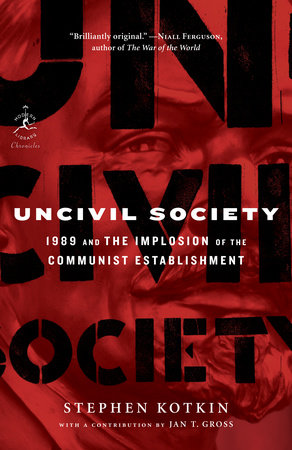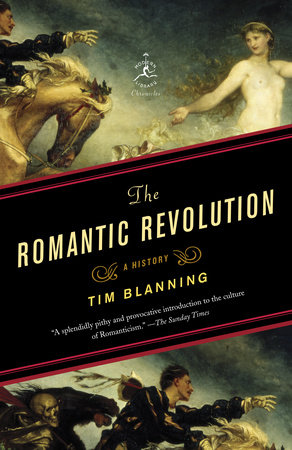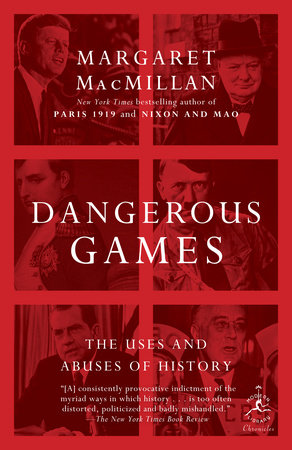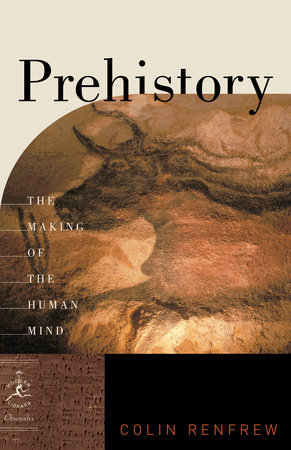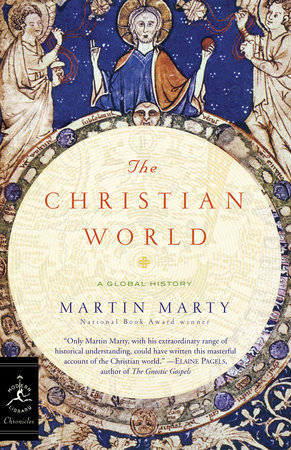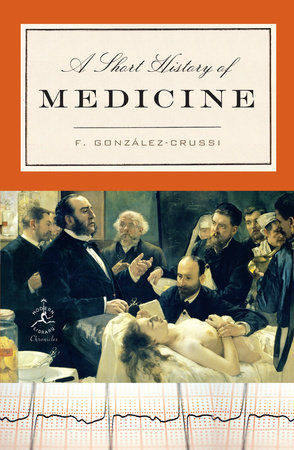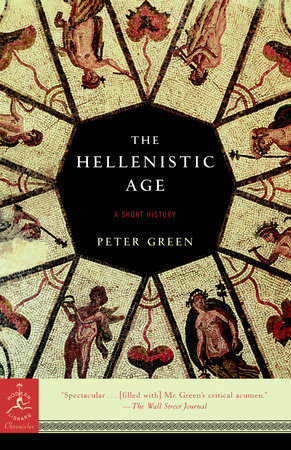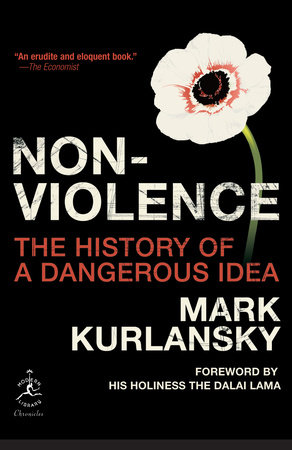Excerpt
Uncivil Society
Chapter One
Bank Run
“How did you go bankrupt?
” “Two ways. Gradually and then suddenly.” —Ernest Hemingway, The Sun Also Rises
The wry Romanian film
A fost sau n- a fost? (2006), known in En - glish as
12:08 East of Bucharest, poses a seemingly passe question: Was there or was there not—“A fost sau n- a fost?”—a revolution in 1989? Most of the film takes place at a desk, as an on- air discussion inside a television studio. (It is often said that Romania’s 1989 events took place mostly on TV.) The pompous host (who is given to quoting Herodotus) is called Virgil Jderescu, a provincial TV station owner whose talk show is called
Issue of the Day. This particular day is December 22, 2005, and the issue is what happened on the same date sixteen years earlier. After some potential panelists bow out, Jderescu goes live with a debt- ridden, alcoholic history teacher named Tiberiu M∫nescu and a grumpy, lonely pensioner named Emanoil Piscoci who dresses up as Santa Claus for children. The telecast backdrop shows the live image of a drab, unnamed Stalinist- style wide town square (thought to be Vaslui, the eastern Romanian hometown of the film’s director, Corneliu Porumboiu). The film’s nonaction is riveting: three men sitting in chairs. Jderescu keeps asking “Was there, or was there not, a revolution in our town?” M∫nescu recounts how on December 22, 1989, he had gone to their town square with three other teachers—conveniently, two are now dead and one departed for Canada—before 12:08 p.m., as part of a protesting vanguard. The timing is crucial because Nicolae Ceauoescu, the Romanian dictator, fled Bucharest by helicopter precisely at that time. The Santa Claus impersonator claims that he, too, went to the square, albeit after 12:08. Jderescu takes a call to the show: it’s the sentry on duty in the town square sixteen years ago, who denounces as a lie M∫nescu’s claim to have been on the square before 12:08. Another caller places M∫nescu at the corner bar drinking the whole day and night. As callers along with the host impugn M∫nescu’s story, the latter interjects, “Why split hairs over such stupidity?” The broadcast winds down by depicting—live on the studio backdrop—forlorn gray buildings, a darkening sky, streetlights turning on, and beautiful snow falling. The last phone- in caller says, “I’m just calling to let you know it’s snowing outside. It’s snowing big white flakes. Enjoy it now, tomorrow it will be mud . . . Merry Christmas, everybody!” The woman reveals that she lost her son on December 23, 1989, the day after the revolution.
The film seems to examine whether a revolution can take place if no one risks anything, at least in this town, and it seems to reinforce a general impression that Romania in 1989 was the grand exception. Romania, it is often said, was the only Eastern European country whose experience in 1989 was supposedly a coup, not a revolution. Or it is said that Romania did have a revolution, but it was stolen.1 Adding to this sense of exceptionalism, Romania turned out to be the only country besides Yugoslavia where socialism’s end was bloody. That carnage notwithstanding—officially Romania suffered 1,104 dead, mostly after December 22—it will be our argument that Romania in 1989 was not an exception but part of a continuum that includes East Germany as well as most other cases. Communist Romania had a minuscule opposition. It was a country of Tiberiu M∫nescus and Emanoil Piscocis, as well as Virgil Jderescus, but, as we shall see, Romania offers a fine example of what could be called nonorganized mobilization, which in 1989 was actually the norm across Eastern Europe. It was Communist- era Poland, usually taken as paradigmatic, that proved to be the grand exception. In Poland, the opposition was not a small coterie of dissidents or groups of people arrayed around private kitchen tables, taking advantage of the mass construction of self- contained (noncommunal) apartments to commiserate in trusted company. The opposition in Poland was societal, with organizations and physical spaces, Sunday sermons and flying universities, and a fully articulated alternative to the regime.2 Yet Romania, not Poland, experienced large street protests in 1989. That year, East Germany, too, had massive street demonstrations, even though, as in Romania, there was relatively little organized opposition. Back in the 1970s, most commentators thought that the capitalist
West, not communism, was nearing collapse, and even in the second half of the 1980s, Communist systems seemed not doomed but uncertain. Unexpectedly, however, 1989 turned out to be an
annus mirabilis, producing revolutions in Eastern Europe that sparked repercussions around the globe, from apartheid South Africa to one- party Mexico. The Romanian case, like the East German one, indicates that much of the interpretive challenge consists in analyzing how East European Communist regimes fell in the absence of organized oppositions. This requires a different understanding of social process from the usual invocation of something called “civil society.” The latter slogan has proved to be catnip to scholars, pundits, and foreign aid donors.3 After “modernization theory” (the hugely influential 1950s–1970s developmental ideology) had morphed by the 1980s into “democracy promotion,” the notion of “civil society” became the conceptual equivalent of the “bourgeoisie” or “middle class”—that is, a vague, seemingly all- purpose collective social actor.4 It was claptrap. Several hundred (sometimes just several dozen) members of an opposition—with a handful of harassed illegal associations and underground self- publications (
samizdat)—were somehow a “civil society”? Meanwhile,
hundreds of thousands of party and state officials, political police operatives, army officers—who often went to school, worked, and even lived together, controlled all (state) property, public spaces, communications networks, and institutions, and had their own clubs, resorts, and shops—were somehow not a society?
Such widespread misapprehension transpires when normative thinking—imagining how things ought to be—gets the better of analysis. Needless to say, in 1989 “civil society” could not have shattered Soviet- style socialism for the simple reason that civil society in Eastern Europe did not then actually exist. The mostly small groups of dissidents, however important morally, could not have constituted any kind of society. On the contrary, it was the establishment—the “uncivil society”—that brought down its own system. Each establishment did so by misruling and then, when Mikhail Gorbachev’s Kremlin radically shifted the geopolitical rules, by capitulating—or by refusing to capitulate and thus making themselves susceptible to political bank runs.5 Suddenly, decades of bravery by disparate dissidents— the moral thunderbolts, the “antipolitics,” the “living in dignity”—were swamped by a cascade of activism on the part of formerly inert masses and by elite opportunism. Would- be totalitarian states, which aspired to total control and total mobilization, by the same token proved to be totally vulnerable.
Civil Society Utopias
Whence the reverie of “civil society”? Before the eighteenth century, the terms “civil society” and “the state” were nearly synonymous and meant essentially political society. But Adam Ferguson (1723–1816), along with other thinkers of the Scottish Enlightenment, helped divide the two terms into an opposition (a process continued by G. W. F. Hegel and Alexis de Tocqueville). Ferguson’s
Essay on the History of Civil Society (Edinburgh, 1767) contrasted a civilized rule- of- law society to a barbarous one. His text came out in eight editions up to 1819, but the next English edition had to wait until 1966. Not long thereafter, the term “civil society” would again burst into vogue, especially among analysts awestruck by the breakthrough of Solidarity in Communist- ruled Poland.6 Suddenly, individuals and groups around Eastern Europe that opposed Communist systems were said to constitute an emergent civil society—that is, “autonomous” forces outside the state and, in these instances, against the state. Such recourse to the concept of “civil society” in fact exaggerated the role of intellectuals (at the expense of workers, churches, and the world economy).7 More consequentially, the supposed mutual exclusiveness of civil society and state produced a skewed characterization of society in terms of how a society was (self- )organized. True, social organization is not to be taken for granted; it must be achieved, and sustained. But a society is also profoundly shaped by how the state is organized.8 “Civil society” was in many ways the conceptual counterpart to the concept of totalitarianism, but if it was precisely the all- encompassing totalitarian despotism that made the term “civil society”— as something outside the state—so appealing, this very system also did not permit anything like a civil society to exist.
“Civil society,” if it means anything, signifies people taking responsibility for themselves. That, however, requires the ability not just to self- organize but also to have recourse to state institutions to defend associationism, civil liberties, and private property. Obviously, dissidents living under Soviet- style systems could not attain that, no matter how brave they were, because of the nature of the Communist state. Founded on the suppression of private property and “bourgeois” rule of law, the Communist state lacked indepen - dent judiciaries, civil services, and independent media to help defend
against state power. To be sure, determined individuals could appeal to international norms and laws, especially the 1975 Helsinki “basket three” human rights obligations signed by Communist regimes. And many of them cited the Communist regimes’ own constitutions. On December 5, 1965, Soviet “Constitution Day,” the mathematician Aleksander Esenin- Volpin organized a rally on Moscow’s Pushkin Square of around two hundred people and held up a sign reading “Respect the Constitution.” (He was promptly arrested.) Less quixotically, in Poland from the 1970s such a strategy—designed as a decisive break from any attempt to reform socialism—did become a powerful form of social organization, in a kind of self- fulfilling prophecy. “ ‘We’re supposed to be citizens!’ we thought,” recalled the late historian and Solidarity activist Bronis∞aw Geremek in an interview in 2007. “Even the socialist constitution of the Polish People’s Republic refers to citizens’ place in society, and we wanted society to belong to the citizens. And that was our organizing utopia. If there was any sort of utopia in ‘Solidarity,’ it was the utopia of civil society.” 9 Elsewhere in the bloc, however, this practice of living
as if one constituted a civil society had limited organizing effects, even as utopia.
“Civil society,” explained the Hungarian novelist and essayist Gy\rgy Konrad (1933–) in 1984, “is still only an idea.”10 That characterization held right through 1989. East Germany’s “New Forum,” a very loose umbrella for various groups, was first announced only on September 21, 1989. Fair or not, it was no Solidarity (an independent labor union of 10 million members). True, some 3,000 people signed New Forum’s founding appeal straight away, and more than 200,000 people eventually signed, but New Forum played little role in the events of 1989; it vanished soon thereafter.11 Czechoslovakia’s Civic
Forum took shape in November 1989, partly in response to East German events, such as the occupation of the West German embassy in Prague by East Germans clamoring to go west, but also in response to the beatings of peaceful Czechoslovak student demon - strators. (Civic Forum’s Slovak counterpart was Public Against Violence.) Civic Forum seemed liked an update of the rights movement Charter 77 (which had not aspired to become a mass movement), but Civic Forum did not even have a program. As late as the beginning of 1989, the Czechoslovak security service estimated the country’s active dissidents at no more than 500 people, with a core of about 60 (a count similar to East Germany’s).12 Meanwhile, on Prague’s Wenceslas Square some 10,000 people massed on October 28, 1989, and 200,000 people on November 19; eight days later, a general strike of some one million people shut down the country. But none of this was inspired or led by dissidents or Civic Forum, which was abolished not long after 1989. In other words, the socialmovement analogies to Poland’s mesmerizing Solidarity have been profoundly misleading, falsely generalizing a successful strategy in one special case to others.Romania in 1989 lacked even a New Forum or a Civic Forum from which to try to make false analogies to Poland, but consider Hungary, which is often placed alongside Poland because in 1989 Hungary, too, had a regime- opposition “roundtable.” As Andras Sajo has written, however, Hungary in 1989 saw few street protests and little popular mobilization, and “the Hungarian opposition was rather isolated and few in number.” The Hungarian roundtable— 300 sessions, 500 participants, three months—began as a kind of regime self- negotiation (which had been going on internally for years).14 From 1985, Hungary’s state trade unions and party youth group had begun to shrink and one third of Hungarians’ working time was being spent in the private sector for services, but the key factor leading up to 1989 in Hungary was that many Communists lost interest in preserving their own system. Not all, but a number, of party officials preferred to become an asset- owning bourgeoisie.15 An even more substantial number had come to favor a multiparty political system. Whatever the motivations, the Communist faction
seeking an exit from the Communist monopoly system pressured hard- liners, while also assisting reform circles in society. In short, elements in the party worked to fortify the loose anti- Communist opposition. Someone had to be on the other side of the table when the Hungarian roundtable opened six days after the June 4, 1989, elections in Poland. Moreover, even in Poland, as we shall see, the roundtable had to be launched by the regime.
Uncivil Society Paradoxes
Unlike the people in whose name they ruled, the regimes enjoyed a full panoply of institutions, associations, patronage, and other networks. They carried special identity cards that opened doors and, when flashed, advertised their status. Within a hierarchy, they shared life experiences, beginning in youth groups, places of training and work, and an ideology, which “appealed to the simpletons and to the sophisticates alike,” explained Zbigniew Brzezinski. “It made its subscribers feel self- righteous, correct, and confident all at once. It left nothing uncertain.”16 They forged lifelong contacts at Romania’s atefan Gheorghiu Party School, East Germany’s party schools, or Poland’s Higher School for the Social Sciences, as well as at Moscow’s Higher Party School. Many attended special military or spy academies, such as the Securitate School in B∫neasa or the Stasi College in Potsdam. With their former classmates they ran entire industries and provinces, had acquaintances and relatives in charge of parallel agencies and locales, and gossiped about the differing comfort levels of the various “closed” hospitals and spas. They sat for their portraits, wore party lapel pins and unbreakable “military” watches as a further sign of their fraternity, and signed their letters “with socialist greetings.” They were allocated apartments ahead of the queue and above the state norm for space, had maids and chauffeurs (so they could be watched and eavesdropped upon), and patronized sports clubs such as Dynamo and Gwardia according to their rank and sphere of activity. They cultivated patrons at the feasts known as party congresses.
And when problems arose—such as how to erase a child’s arrest
record—they could approach the “party affairs” section.The swath of people in the elite formed a society, just not a “civil society,” meaning not one constituted, protected, and held in check by rule of law. To put the matter another way, totalitarian or wouldbe totalitarian states did not eliminate society—they created their own societies. Our term “uncivil society” refers to these formidable bonds and forms of social organization that accompanied an illiberal state, particularly an illiberal state without private property. How extensive were they? In the East bloc, Communist- party membership averaged around 8 to 10 percent of each country’s population, although identification with the regimes’ power and values was wider.
Still, only a minority of party members were actually apparatchiks, that is, those who held no jobs other than party work. But beyond the party apparatus proper, we also ought to include the state functionaries and the military caste, as well as the most privileged sectors of the intelligentsia. Thus, a rule of thumb is that uncivil society, including family members, made up somewhere around 5 to 7 percent of the populace. Clearly, the establishments were not everything, and we touch on the big workplaces around which the large proletarian communities were organized, as well as the Evangelical (Lutheran) Church in East Germany, the Reformed (Calvinist) Church in Romania, and the Catholic Church in Poland.18 Some of these various inchoate nonestablishment realms have been deemed by one analyst a “second society,” thereby building on the idea of the “second economy” (illegal market activities under central planning).19 Combined, the disaggregated “second society” and the “uncivil society” might be dubbed socialism’s “actually existing society.”20 Be that as it may, the truly organized part, with manifold instruments, was the establishment. For analyzing the Communist establishment, the main approach has been
The New Class (1957), a celebrated work by the jailed Yugoslav Communist official Milovan Djilas, who argued that Communist systems produced a bureaucracy that, out of class consciousness, perpetuated its privileges and would cause economic decline by placing its corrupt self- interest and survival above all else.21 Before Djilas, this “revolution betrayed” thesis was usually associated with Leon Trotsky or George Orwell, though shorn of class rhetoric it also overlapped Friedrich von Hayek’s
The Road to Serfdom (1944), while back in 1873 the anarchist Mikhail Bakunin had predicted that if the Marxists came to power, a “new class, a new hierarchy” would form.22 After Djilas, Jacek Kuro∂ (1934–2004) and Karol Modzelewski (1937–), then two young lecturers at Warsaw University, developed this line of analysis, indicting Poland’s Communist ruling class for precipitating a system crisis by exploiting workers and calling for a new proletarian revolution in an “Open Letter to the Party” (1964). Kuro∂ and Modzelewski were sentenced to three years’ imprisonment for “preparing and distributing works harmful to the interests of the Polish state”—meaning, the interests of the very state officials they were targeting.23 Similarly, among nonintellectuals under communism a visceral version of this viewpoint took shape: for example, in 1977, 35,000 miners in Romania’s Jiu Valley in Transylvania went on strike and jeered the authorities with shouts of “Down with the Red bourgeoisie!” The notion of a “Red bourgeoisie” or “new class” predated the concept of “civil society,” but “new class” went out of fashion long ago. Its power consisted in wielding Marxism against Marxist regimes, but, as Djilas himself later conceded, that was also its limitation.
Far from acting coherently, let alone out of class consciousness, the Communist establishments were often incoherent, riven by turf wars and hypersecrecy. Decision making remained a black box even within the upper echelons, while wiretapping and informing were so widespread that elites often hesitated to socialize. Indeed, the paradox of uncivil society was that its members had unlimited authority and command over almost all national resources, yet they were paralyzed. Establishments that could collectivize a peasantry and nationalize an entire country subsequently found themselves unable to take the slightest corrective actions when something failed to go according to plan. Their ubiquitous surveillance notwithstanding, they proved unable to gather or process elementary information about their countries, the first step in policy making. To be sure, despotic governments are not supposed to be troubled by the aspirations of those they rule, but they still need information about public preferences and available resources if only to engage in manipulation. Instead, uncivil society provided all manner of incentives for even loyalists to lie and report fairy tales. And officials rarely debated with opponents, as Lenin had been forced to do, to sharpen their skills and views.
Incompetence in Communist systems was therefore structural. To remove any possible threats of being unseated, and to increase the bonds of dependency, officials often preferred appointing the less able to be their direct subordinates, something that was repeated all the way down the hierarchy. Even insiders lamented that those who rose up in the system were narrow- minded and submissive. People with initiative, independent judgment, and integrity who had joined the party to lead politically active lives or to better their countries were generally weeded out or beaten down. True, most state bureaucracies to an extent promote personnel who are fitter to obey than to lead. But in the cruelly named “people’s democracies” of Eastern Europe, the apparatus substituted itself for the independent political, economic, legal, and academic realms that in pluralist systems furnish a steady flow of talent into the political elite. The resulting stultification afforded satirists boundless material about functionaries’ boorishness and ineptitude—about hamsters in search of a wheel. There were exceptions—officials of distinction, even vision and courage—who occasionally reached and remained in major positions. But they invariably had to waste vast amounts of time and energy to overcome the idiotic obstacles that the apparatus and planned economy kept throwing into their paths. Anyway, careerwise, it was always safest to stick to routine. Risk taking was usually confined to the pursuit of additional material comforts.
Larceny became a way of life in a system where property was theoretically public though actually under the private disposition of managers and officials. Uncivil society also turned out to be full of saboteurs, albeit not deliberate ones. Its members were better educated than most of their compatriots, but that education often equipped them with a cliche- ridden vocabulary and crimped worldview. Minimal experience of travel or foreign languages was combined with maximal experience of administering structures and circumstances, always created by someone else’s power. And though their intriguing and prevaricating required certain gifts, the partystate fostered a kind of “negative selection”—rewarding loyalty and punishing all else. This affected the most highly technical professions and the professional political police, too. Worse, what Vilfredo Pareto had at the turn of the twentieth century bitingly noted about elites generally—that
classes dirigeantes (ruling classes) turn into
classes digerantes (digesting classes), fixated on consumption and selfpreservation— in Communist systems proved inimical to correction.
This structural lack of resilience was compounded by a deficiency in conflict management tools. On the night of December 13, 1981, some five thousand Solidarity activists in Poland were shocked that they could be put under detention by administrative fiat, that the army and the police could roll tanks and combat vehicles into the streets in a massive display of force, disconnect telephones all over the country, impose a curfew on the entire society, and prevent people from moving between cities—all this despite the 10- million- strong membership in the Solidarity labor union. Still, repression provides no lasting solution to social problems.
The regime’s stubborn denials of the existence of
any social conflict made elementary conflict into an existential threat. It was not just that Soviet- style socialism stoked working- class consciousness through proproletarian rhetoric and ritual, then blatantly functioned as a system of elite perquisites, producing ubiquitous grumbling. It was the near- complete absence of outlets or safety valves for basic popular grievance, beyond petitioning and letter writing to officials or to the media (increasingly to state television). Having imposed one- party rule and a centrally managed economy, having abolished independent labor unions and voluntary associations, having forced outward conformity through informer networks, uncivil society found itself unable to handle spontaneous social life.25 Even a mere indication of a desire for privacy, a mere inaction, could constitute—in view of its total claim on people’s lives—a challenge to such a regime. In Communist systems there turned out to be little difference between a group of people signing a protest against a government- proposed amendment to the Constitution, a workers’ strike in a factory, a student meeting opposing suspension of a play in the national theater, or an angry crowd shouting against increases in meat prices. A tremendous overload resulted. Each protest action, each conflict, contained within it the equivalent of a near system crisis. If people could not strike without risking being killed or tortured, if a play’s production could not be suspended without hundreds of students risking expulsion from university and incarceration, and if price increases could not be implemented without putting the jobs of high officials in jeopardy, the system was at latent risk of upheaval even in the absence of society- wide
organized opposition.


